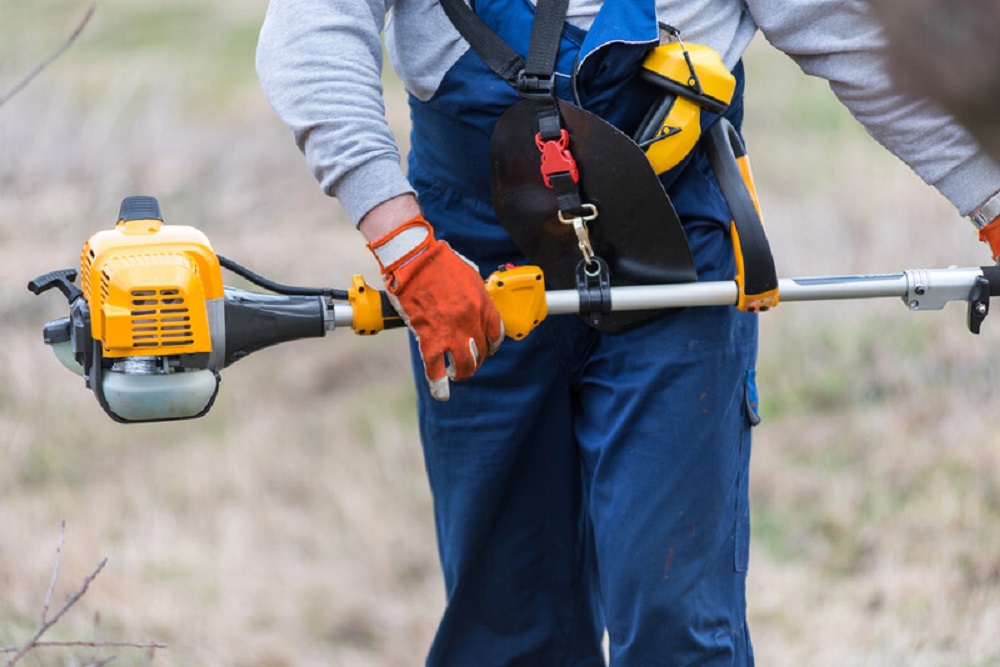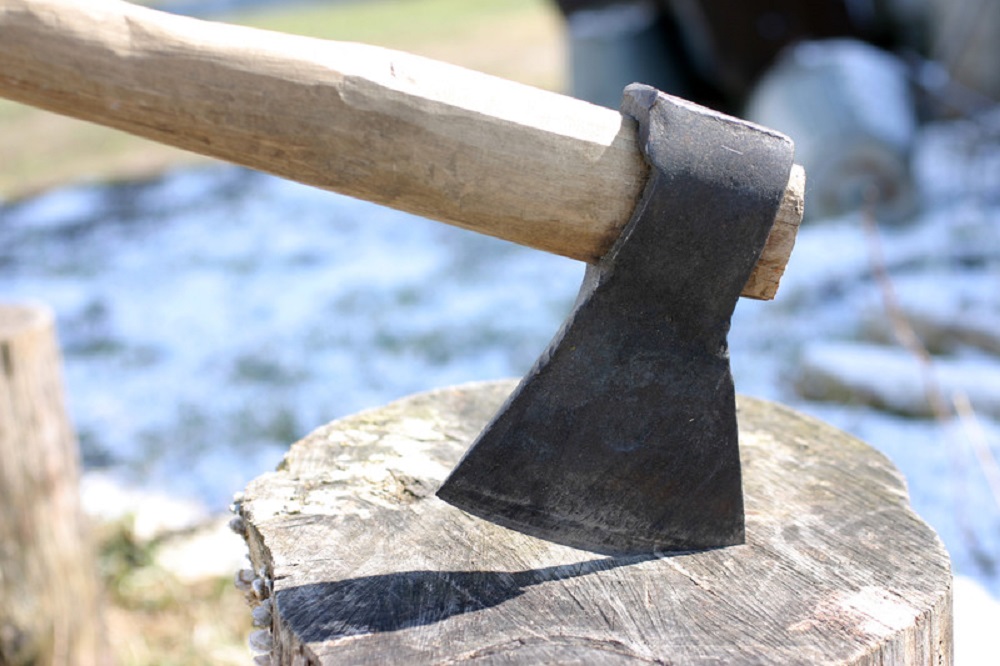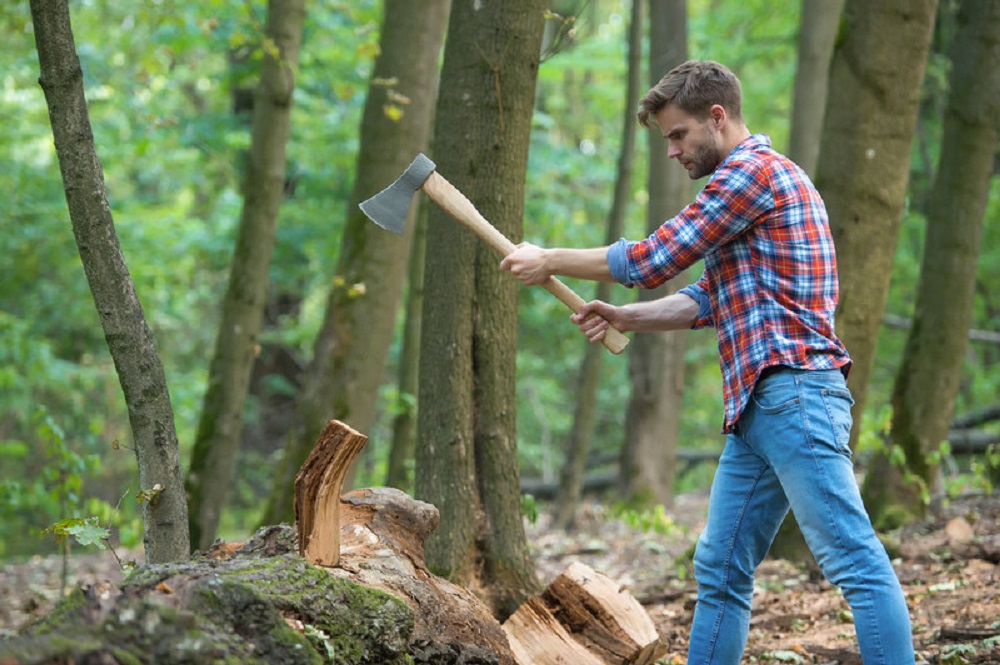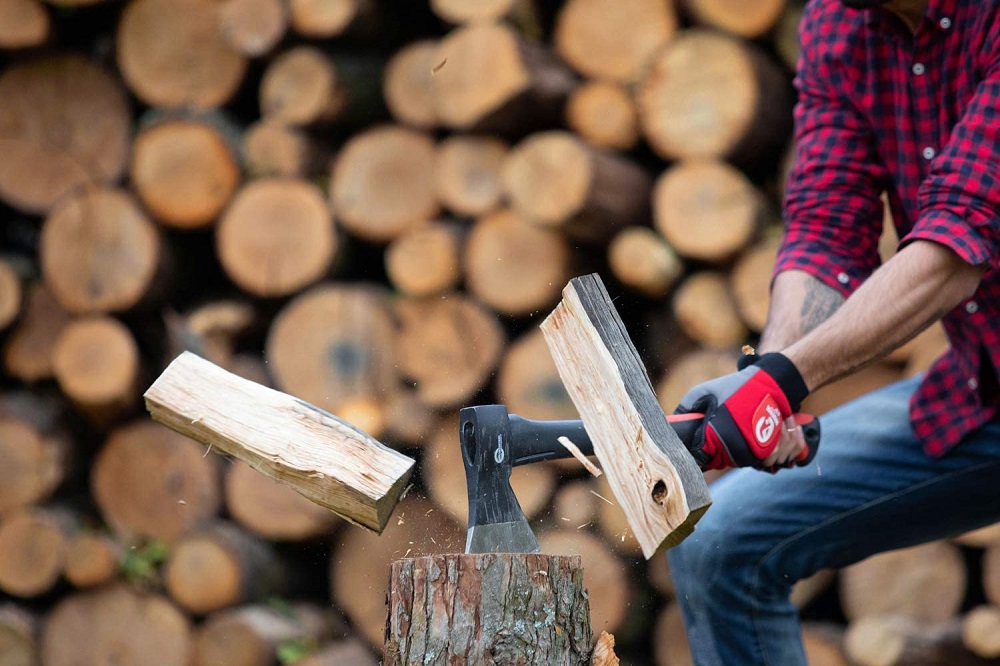
Using the best pole saw will keep your shrubs and trees looking healthy. Trees and shrubs need occasional pruning to thin out dense limbs and to remove broken branches. Using a pole saw is one of the fastest and most efficient ways to tackle this type of job in the yard, since it will easily allow you to reach and cut branches as you remain safely on the ground.
This type of saw can make most pruning jobs much easier, however, they’re not the best choice for every situation. Since the market is flooded with different styles and models of pole saws, it can take plenty of research on your part to find a model that offers the type of power and precision you need to handle all of your pruning needs. Fortunately, I’ve done all of the research for you. I’ve tested out dozens of the top-selling models, narrowing it down to five of the top saws, each of which scored well in a variety of areas. I’ve also put together this buyer’s guide to help those who have never used a pole saw before choosing a model that can meet their pruning needs and one that won’t hit their wallet too hard.
Below, you’ll find a comparison chart that includes each of the saws that landed on my list, their top features, and how each saw rated.
Pole Saw Comparison Chart
| Product | Reach | Weight | Power | Rating |
|---|---|---|---|---|
| Sun Joe Electric Convertible Pole Chain Saw  Shop On Amazon! |
15 Ft. | 8.40 LBS | Electric | |
BLACK+DECKER Pole Saw Shop On Amazon! |
14 Ft. | 10.4 LBS | Battery | |
LiTHELi 40V Cordless Pole Saw Shop On Amazon! |
8 Ft. 7 Inches | 15.19 LBS | Battery | |
| Remington Maverick Pole Saw  Shop On Amazon! |
10 Ft. | 13.9 LBS | Gas | |
| DocaPole Foot Pole Pruning Saw  Shop On Amazon! |
30 Ft. | 7.29 LBS | Manual |
Sun Joe SWJ807E Electric Convertible Pole Chain Saw
This is a two-in-one power tool that can be used as both a chainsaw and a pole saw. This model is powered by a heavy-duty eight-amp motor and can handle branches up to nine and a half inches in diameter. This power tool is perfect for cutting through thin logs and overhanging limbs. The telescoping pole extends up to 8.8 feet. Additionally, the ten-inch cutting bar and chain come with automatic lubrication.
This convertible electric saw can make trimming those hard to reach branches a cinch. The saw’s design will allow the user to remain safely on the ground to cut through even the thickest branches. Adjusting the pole up to the maximum reach will give the pole saw a fifteen-foot reach for tough overhead work.
Pros
- Detachable chainsaw
- High cutting capacity
- Automatic lubrication
- Powerful motor
Cons
- Oil reservoir can leak
Conclusion
Unlike with a gas-powered pole saw, this model will start up the first time around, even in colder temperatures. The long reach of the telescoping pole will allow you to easily reach those hard to access areas, so you can get in there and quickly slice through branches that are up to nine and a half inches thick. Built tough, versatile, and covered by a two-year full warranty, this model is a steal for the price.
BLACK+DECKER Pole Saw
This is a battery-powered pole saw by Black and Decker. This tough highly portable model is able to provide up to one hundred cuts at one and a half inches, per charge. The cutting bar measures in at eight inches and offers a cutting diameter of six inches. The saw includes a twenty-volt lithium ion battery pack, wrench, charger, and a bottle of oil. This is a great heavy-duty pruning saw, with a reach of fourteen feet high. This power tool is compatible with any type of twenty-volt battery pack made by the same manufacturer. So, if you own other types of battery powered tools by Black and Decker, you can use those battery packs for this saw and enjoy a longer runtime for those bigger jobs. This model also features an inline power head, which allows for improved visibility between branches and easier maneuverability. For transport, this saw can easily be taken apart, making it highly portable. The saw’s lightweight design also makes it easy to use and transport, weighing in at just 10.4 pounds.
Pros
- Lightweight
- Decent reach
- High cutting capacity
- Inline power head improves visibility and maneuverability
Cons
- Short runtime
Conclusion
With any type of battery powered pole saw, you have to take into account these tools can run out of juice during use. This can be a big problem if you have a large pruning job to take care of. Fortunately, this saw is compatible with any type of twenty-volt battery pack made by Black and Decker, so if you have any other battery powered tools by this manufacturer, you can use those battery packs as backup and run the saw for as long as you need.
LiTHELi 40V Cordless Pole Saw
This saw’s motor is powerful, yet it delivers torque that’s vibration-free. The saw comes with a couple of automatic systems. The automatic oiler will keep the bar and chain oiled when needed, preventing the saw from overheating and promoting smooth cutting action. The automatic tool-free quick tension knob makes adjusting the chain’s tension a cinch. The ability to adjust the length of the pole on the fly allows you to lengthen the pole up to nine feet, without stopping to grab tools to make this type of adjustment. The pole head’s four-position button system will allow you to make fast cuts at any angle. The model’s biggest drawback is its weight, which comes in at 15.19 pounds. This type of weight can make it difficult to use this saw for longer periods of time.
Pros
- Five-year warranty
- Allows for on the fly adjustments
- Automatic chain oiler
- High cutting capacity
Cons
- Very heavy
- Short reach
Conclusion
This model is highly adjustable, easy to use and designed to last. Unfortunately, its weight makes it difficult to handle those bigger overheard jobs. Of course, the lack of a cord makes this model highly maneuverable and convenient to use, especially if you’re trimming in a rural area, yet the heavier weight can limit how long you’re able to safely make cuts overhead.
Remington RM25PS Maverick Pole Saw
This gas-powered pole saw features a twenty-five CC gas engine that offers plenty of power. The included automatic oiler will keep both the chain and bar lubricated, promoting optimal cutting performance, while preventing the motor from overheating. The pole saw comes with a seven-foot extension pole, for a total overhead height of twelve feet. The saw features quick start technology that makes pull starts fast and easy.
Pros
- Long reach
- Automatic oiler
- Seven-foot extension pole
- Twenty-five CC gas engine
Cons
- Oil reservoir leaks
- Loud
- Heavy
Conclusion
This tough, gas-powered pole saw comes with some great features that make this model more beginner-friendly, including an automatic oiler, seven-foot extension pole, and eight-inch chain and bar. This may not be the quietest pole saw on the market, but it’s definitely one of the toughest. Additionally, the saw’s two-year warranty will give landscapers and homeowners every reason to buy, considering the manufacturer clearly stands behind their product.
Doca Pole Foot Pole Pruning Saw
The newest pole saw by Doca Pole is designed for light pruning only. It offers a thirty-foot reach so it can easily handle those higher branches that are up to three inches in diameter. This model comes with the popular thirty-inch extension pole, offering the highest pruning reach compared to other models on the market. This model is designed with a thirteen-inch bi-directional tooth design and comes equipped with a lightweight, durable handle, complete with a locking screw and comfort grip. The thumb lever screws and clasps must be tightened by a screwdriver and are designed to prevent pole slippage during use.
Pros
- Lightweight
- Includes extension pole
- Offers a longer reach compared to competing models
- Low price
Cons
- Can only cut branches up to three inches in diameter
- Manual
Conclusion
This model is perfect for light pruning and accessing those hard to reach branches that would be impossible to trim with hand pruners or even a traditional chainsaw. The saw’s lightweight design and the included free extension pole gives landscapers and home owners every reason to buy. Unfortunately, this model can handle light pruning needs only, so if you’re looking for a model that can slice through branches over three inches in diameter, you may want to pass this model on by.
Pole Saw Buyer’s Guide
If you’re looking for a saw that can access those out of reach branches and cut through branches that are up to eight inches in diameter, then a pole saw may be right up your alley. However, if you only need to prune foliage, vines, or twigs, then this type of saw may be overkill. For many DIYers, a pole saw is an essential power tool. Trees need constant pruning to thin out thicker branches and get rid of broken ones, to keep a tree looking its best.
With traditional pruning tools, keeping your hedges and trees in good shape can be a time-consuming task. Pole saws can bring magical, fast results by getting a job done more efficiently. Additionally, a well-manicured, neat looking yard can instantly enhance a home’s curb appeal.
So, how do these saws work exactly?
Basically, a pole saw is a saw that’s attached to the end of a long pole and it comes in handy for those high up hard to reach branches. This versatile power tool can be powered by electricity, gas, or batteries.
With this type of saw, you can trim, fell, cut, and prune up to a height of fourteen feet. If you don’t want to struggle with a ladder and using a traditional, heavy chainsaw, then a pole saw is the perfect option.
Benefits of Using a Pole Saw

- These saws are incredibly easy to use, making them very beginner friendly. These saws fire up with the push of a button and are very easy to handle.
- There are several types and styles to choose from
- These saws are affordable and provide enough power to cut down branches that are several inches in diameter.
- These saws are lightweight and come in handy when it comes to trees since the lightweight design will not cause user fatigue.
- Buyers can choose the right pole length to meet their specific cutting needs. Models with an adjustable pole are incredibly versatile.
- Cordless models run on lithium ion batteries that offer a long runtime
- These saws do not require much maintenance and often come with an automatic lubrication system that delivers the right level of lubrication
- These saws feature a long lifespan
- Their sleek design makes them easy to store and transport
Other Important Features
These saws offer plenty of benefits and are a must-have tool for properties of all sizes. Below, you’ll find information concerning the different features available and how to choose a model that offers the type of power and performance you’re looking for. These saws are designed to make pruning hedges and trees much easier, but there are many factors and features you’ll need to consider before you hit that buy now button. The biggest, and most important is the length of the pole, which will determine how high the saw will reach.
Working Height
The spec for a saw’s working height is often found on the packaging or spec sheet, but this doesn’t refer to the length of the pole. Instead, this spec refers to the length of the pole in addition to the length of the user’s arm. Most manufacturers will estimate two feet for arm length, so if the model you’re interested in claims to have a working height of ten feet, the pole itself is probably eight feet. In terms of max length, most saws will max out at ten to twelve feet for working height. Models with a pole longer than twelve feet would be very difficult to control, especially when used in windy conditions.
Most models will come with a telescoping pole that will allow the user to adjust the length.
Cutting Bar Length
The saw’s cutting bar determines its max cutting diameter in terms of branch thickness. A bar length can range from six to twelve inches. On average, you’ll come across models with an eight-inch bar. The cutting bar needs to be a minimum of two inches longer than the diameter of the branch that you plan to cut. As an example, you’d need a six inch bar to cut a four-inch thick branch.
Weight
Pole saws are very light. The heaviest models will weigh around twenty pounds. Lighter models will weigh ten to fifteen pounds. Of course, when you’re doing a lot of overhead work, even ten pounds can feel pretty heavy after working for more than an hour.
Cordless and electric models usually weigh much less than gas-powered. Keep in mind, if you’re looking for a model designed for small jobs around the home, lighter can always be better, especially if you’ve never used a pole saw before. Heavier models can be difficult to control. Additionally, they can take plenty of arm and upper back strength to hold above your head.
Detachable Saw
Some models will feature a detachable cutting head that can be held just like a chainsaw. This will come in handy if you want to cut a branch into smaller pieces once you’ve cut it off the tree.
Type of Oiler
Usually, there are a couple of different types of chain and bar oilers that you’ll come across when you’re shopping for a pole saw: manual and automatic. The automatic type ensures that the chain and bar always remain well-lubricated. Most pole saws will come with this feature and it’s a great one to have since it can prevent your saw from overheating.
Models with a manual oiler are simple enough to use. To lubricate the chain, all you have to do is press a button.
Power Options
Power options for pole saws include cordless, gas-powered, and electric. Not only does the type of power the saw uses have an impact on price, but it will also affect its performance.
Electric
If you have a small yard, then an electric model may be all you need. These saws are very affordable and often cost under one hundred dollars, depending on the quality and any extra features. However, use will be restricted since these saws must be plugged into a power outlet. Electric models typically weigh around fifteen pounds and are much quieter than gas-powered models, however, you can’t expect a totally silent operation considering all pole saws will make some noise. An electric model isn’t quite as powerful as a gas-powered saw. Yet, these saws offer around six to ten amps of power, which is more than enough to cut through branches that are two to five inches thick.
Cordless
For a medium sized or large yard, a cordless saw may be the best way to go. These saws operate on rechargeable batteries, so the user will not be restricted by the length of an extension cord. These saws usually weigh twelve to fifteen pounds, which can help to minimize user fatigue. This type of saw will work well for branches that are three to eight inches thick and are much quieter than gas-powered models, but pricier than electric saws. Their power capability is measured in volts, relating directly to battery size. You’ll often come across models with a power rating of forty to eighty volts.
Gas-Powered
If you have a large property with plenty of trees to trim and you’re not too worried about noise, then a gas-powered model is a great option. These saws are much heavier than battery-powered or electric models, with an average weight that ranges from sixteen to twenty pounds. Pros often use this type of saw since they can easily run for hours and are able to cut through branches that are eight inches thick. These saws are measured by engine size in CCs or cubic centimeters. You can find a gas-powered pole saw with a CC rating ranging form twenty to forty cubic centimeters.
Usage Tips
- When using a pole saw, make sure the work area is clear. The area that you’ll be standing in should be free from animals, people, and any property that may get damaged by a falling branch.
- Before you cut a branch, you need to know exactly where you’ll cut. Take time to plan on where you’ll be making the cuts and note where the branches will fall.
- Always remove lower branches first. This gives the user a clear path to safely remove and access the higher branches.
- Make sure you’re standing in the right spot. When branches fall out of a tree, you don’t want to be standing in an area where you might be hit.
- Always hold the pole correctly. The end of the pole must be held at chest level. Instead of adjusting your body when it’s time to cut through higher branches, adjust the length of the pole.
- Once you’ve adjusted the pole to the correct length, you’ll need to use both hands to move the saw to the branch that needs to be cut. Before you rest the blade on the branch, make sure you that you have the saw’s weight under control.
- For the first few cuts, you will want to use a lower speed, which will create some grooves in the wood. This will prevent the blade from slipping. Once that grooves have been cut, you can then crank up the speed to slice through a branch.
- After a branch has been cut down, make sure you move it out of the way and keep your work area nice and clean and free of any tripping hazards.
- Avoid using the saw in wet conditions since wood can be very slippery when it’s wet.
- Only cut one branch at a time. Attempting to cut through more than one branch in a single pass can increase the chance of an injury.
- If the branches you’re trying to cut through are under a lot of tension, then this can cause the branches to snap back unpredictably. Consider first make an undercut going only halfway through the wood before you make a cut through the top. This reduces the possibility of injury by minimizing tension.
- If the saw’s chain gets pinched or you hit a hard object, then there’s a chance the saw is going to kick back at you. If this occurs, it can cause a serious injury. Since you’ll be working above your head, you can easily lose control of the saw. Because of this, it’s important to always be prepared for kickback.
- Always read the included user’s manual before using your new saw and learn how to properly use and adjust it. Most models work the same, but your new saw may have some new features that you’re not familiar with.
Frequently Asked Questions
What Should I Look for when Buying a Pole Saw?
When you’re shopping around for a new pole saw, consider the thickness of the branches you need to saw. Branch thickness will have a major impact on the model you choose. If you’re not sure about branch thickness, then look for a model that can cut through branches that are eight inches in diameter or search for the longest bar you can find. A longer bar will be very effective when it comes to sawing through the thickest branches.
Which is Better Gas or Battery Pole Saw?
A gas-powered pole saw is not the best choice for the environment since they tend to emit a lot of pollutants, just like other types of power tools that are gas-powered. An electric pole saw is an eco-friendlier choice. Of course, these saws don’t offer the same level of power that a gas-powered model does.
How Far can a Pole Saw Reach?
Pole length varies from model to model. Some poles will only offer a six to eight-foot reach, however, it’s possible to find saws that come with poles that provide a ten to fifteen-foot reach.
Are Pole Saws Dangerous?
All saws are dangerous. However, since you’ll be using this type of saw for overhead work, you’ll need to be extra cautious during use. Make sure you take it slow and identify where a branch will most likely fall so you can steer clear of that area as you cut.
Are Pole Saws Easy to Use?
Unlike other gas-powered models, starting up a pole saw is pretty easy. Firing up one of these saws is as easy as pushing a button. Those new to saw use in general will need to be careful when using this type of saw, since the saw will be held directly over their heads as it cuts.
Can I Use Motor Oil in My Electric Chainsaw?
Motor oil isn’t the best choice to use to oil a bar on a chainsaw, however, it will work temporarily if there’s no other type of oil available. The big drawback to using this type of oil is that it isn’t sticky enough to stay on the chain and bar. This means, during use, the oil will start flying off the bar, which can create a big mess.
Final Thoughts
The best pole saw will offer the type of portability and power you need, based on the size of your yard and the thickness of the tree branches you’ll be pruning. The models in my lineup offer the type of power most DIYers are looking for, and feature a versatile design, excellent pole length, and an outstanding performance. If you’ve never used a pole saw before, then this buyers guide, and my product recommendations will help to point you in the right direction, so you can find the type of pole saw that’s capable of slicing through the trees you have on your property and one that offers a reliable performance.
source https://woodcutterhq.com/best-pole-saw/






























